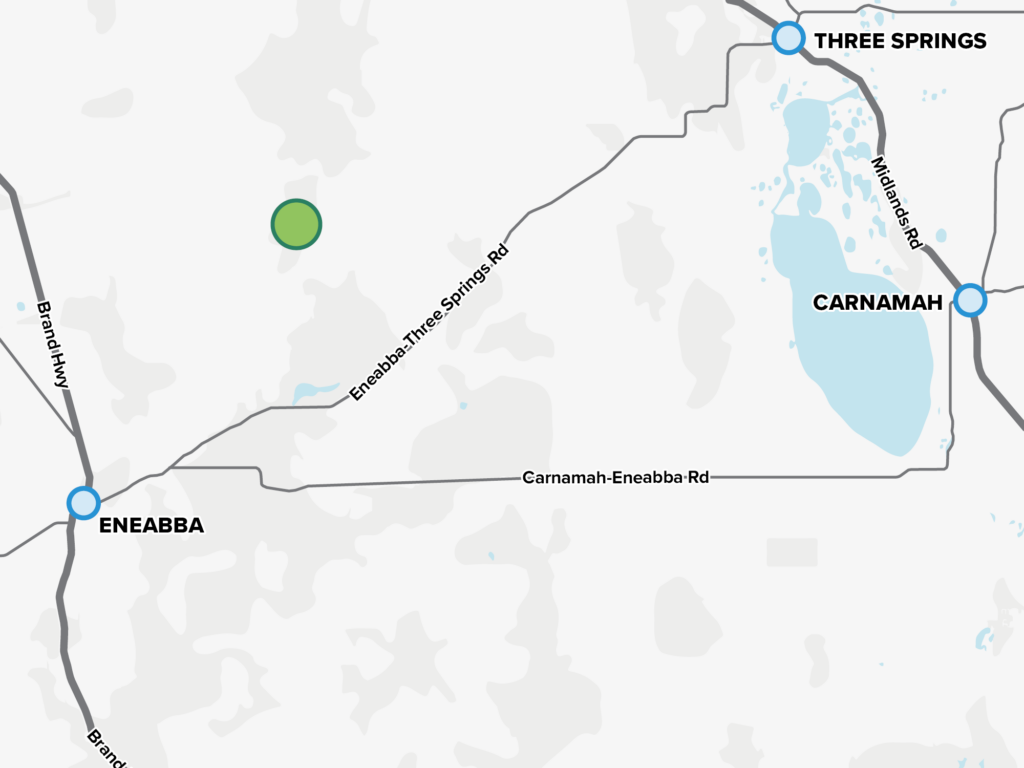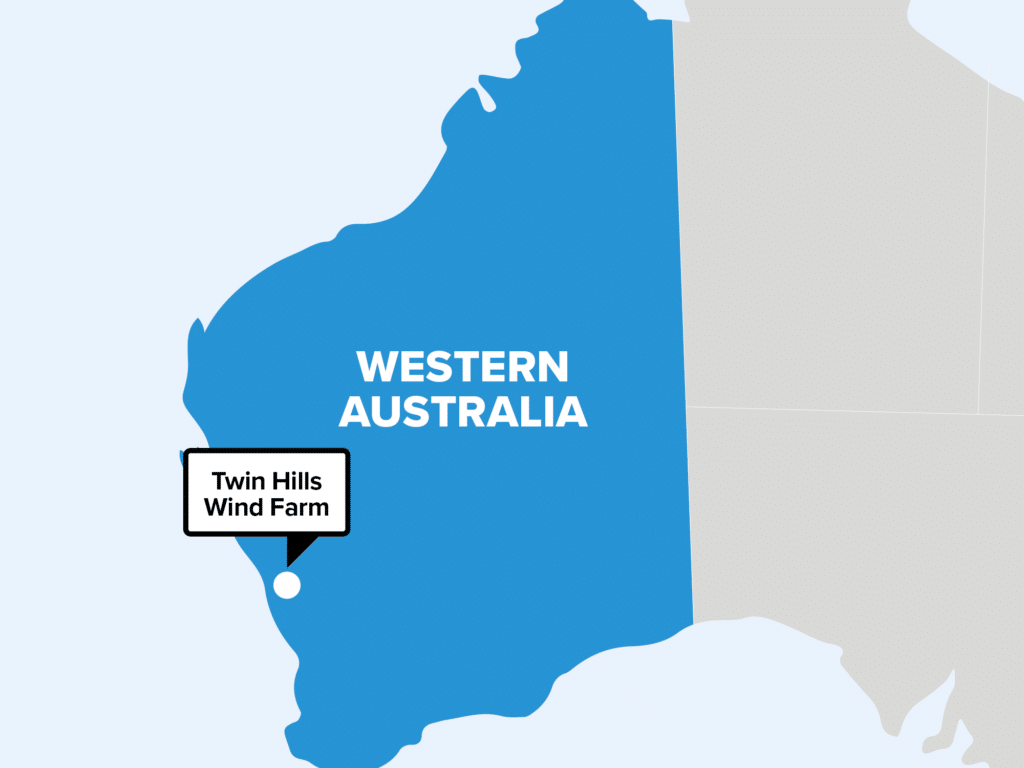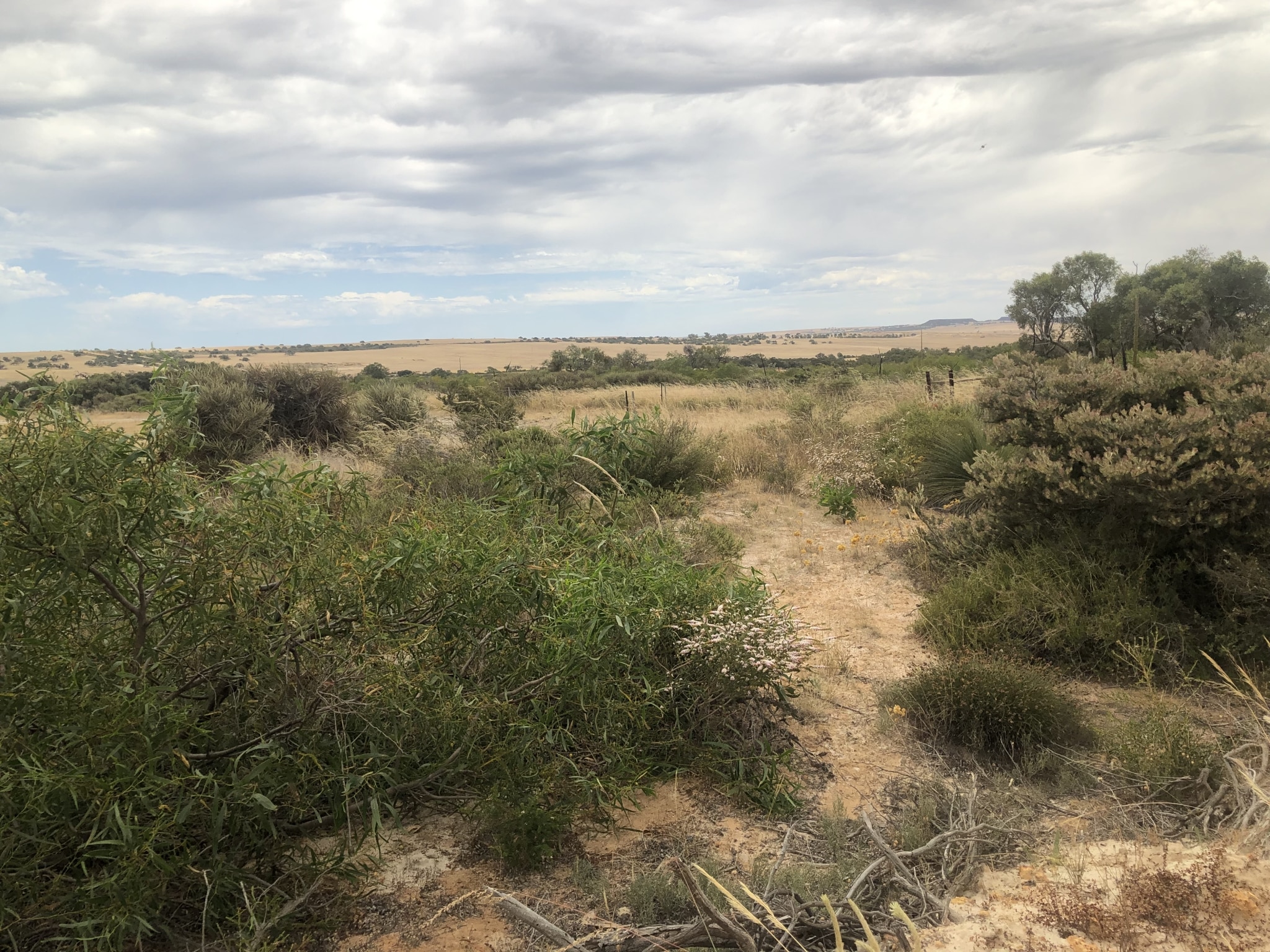Current status
The project is in the feasibility stage, with various impact assessments underway to inform the initial design of the project.
We will be submitting a development application in early 2024 to install one or two new meteorological masts to gather more detailed wind data at the proposed site. We are aiming to install these masts by mid-2024.
KEY FACTS
Number of turbines:
Up to 140
Turbine height:
Up to 250 m
Project area:
20,000 hectares
Project location:
15 km northeast of Eneabba, 50 km southwest of Three Springs
Project status:
Feasibility stage
Construction period:
Two to three years
Local governments:
The Shire of Three Springs and the Shire of Carnamah
Proposed project site


Why here?
The project site has an excellent wind resource, is close to electricity transmission infrastructure, and is appropriately zoned. In addition, potential impacts to important ecological, landscape or heritage sites can be avoided or are low at this location.
Economic benefits
The project will establish a local procurement program to ensure that significant economic benefits flow to the region in the form of wages and contracts. Compensation will be provided directly to key project stakeholders, including host landowners and project neighbours.
Environmental benefits
Wind farms generate electricity with a significantly lower carbon footprint than that of traditional fossil fuel generation technologies. Projects such as the Twin Hills Wind Farm align with the decarbonisation goals of the Western Australian Government.
Benefit sharing program
We plan to establish benefit sharing initiatives as part of this project. Find out more about our proposed benefit sharing program here.
Project stages
Developing a wind farm is a long and complicated process. It takes several years to understand the potential social, economic, and environmental impacts and benefits of a proposed project. This work is guided by a rigorous approvals process and considerable consultation with stakeholders and the community.
- Initial planning and environmental studies are undertaken, and the new wind monitoring masts are installed. The proposed wind farm design is optimised.
- Community engagement commences.
- Lodgment of State and Commonwealth referrals.
- Preparation and lodgment of the wind farm development application. Includes public comment period and decision by the relevant authority.
- Community engagement continues.
- Seek pre-construction approvals, complete detailed design, and finalise project financing.
- Community engagement continues.
- Civil and electrical works, followed by installation and commissioning of wind turbines.
- Community engagement continues.
- Infrastructure removed and land returned to its previous state.
- Community engagement will continue during this stage.
Assessment works to date
Wind monitoring
A 60-metre wind monitoring mast was erected near to the project site in 2008. The data collected from this initial mast indicates an excellent wind resource exists at the site, however taller masts need to be installed to accurately measure the wind speeds at the height of modern wind turbines and provide more accurate estimates of the potential wind farm energy output.
Ecology
Ecological surveys are ongoing and will continue into 2025 as part of the approvals processes. These include surveys that relate to birds and bats, terrestrial fauna, and flora and native vegetation.
